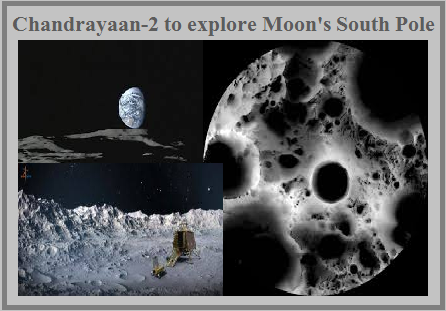India’s attempt to land a robotic spacecraft on moon’s South Pole seems failed on 7th September,2019. Initially, landing was smooth but later on the trajectory diverged from the planned path. Suddenly, the mission control room felt silent as communication from the lander was lost just above 2.1 kilometres away from the surface of the moon. Let us read more about it.
As we know that India’s Chandrayaan-2 is the ISRO’s second moon mission which was launched from Satish Dhawan Space Centre, Sriharikota on 22 July, 2019 and it travelled around 3,84,000 km.
Unfortunately India could not get success in landing on the moon and lost the chance to become the 4th country to land on the moon. But this is not the end of all Indian space missions.
ISRO’s Chief Sivan confirmed that communication with the lander had been lost after 13 minutes when the Vikram began its descent.
Let’s have a look on the Landing process of the lander.
Why landing is focus on Moon’s South Pole?
The South Pole of the Moon remains shrouded in mystery. According to the scientists there is a possibility of the presence of water in the permanently shadowed areas around it. It is also said that the surface area at the South Pole of the Moon remains in shadow which is much larger than that of its North Pole and so the presence of water and minerals is expected.
According to ISRO, the South Pole region of Moon has craters that are cold traps and contain a fossil record of the early Solar System. Since billions of years, the craters of the moon’s South Pole have been untouched by sunlight which has a record of undisturbed solar system’s origin. It is estimated that the shadowed craters may hold nearly 100 million tons of water. In fact its regolith has traces of hydrogen, ammonia, methane, sodium, mercury and silver which make it an untapped source of essential resources. According to ISRO, its elemental and positional advantages make it suitable pit stop for future space exploration.
What is the goal of Chandrayaan-2 mission?
The goal of the mission is to discover better understanding about the Moon’s origin and its evolution by conducting topographical studies and mineralogical analysis. Few other experiments will also be conducted on the surface of the Moon. That is, Chandrayaan-2 mission will foster the findings of Chandrayaan-1.
We can’t ignore the fact that till now no country has ever explored the South Polar region of the Moon whether it be a manned or unmanned mission. The South Polar region is far from the equator and is totally uncharted till now. In an international level, Chandrayaan-2 mission will give India a lead in space exploration.


